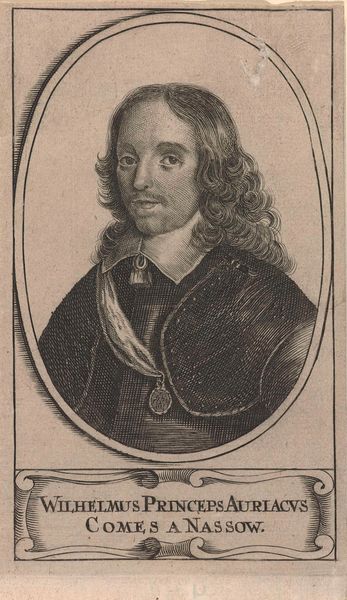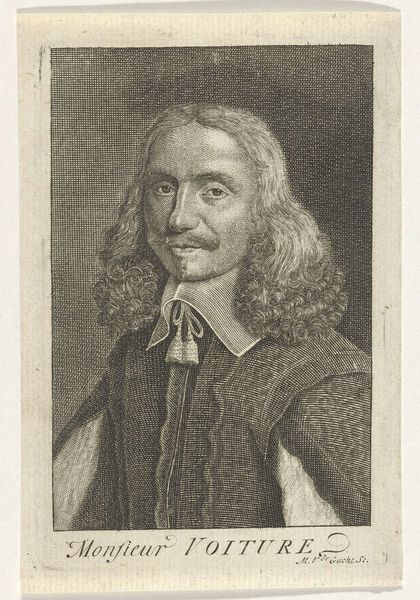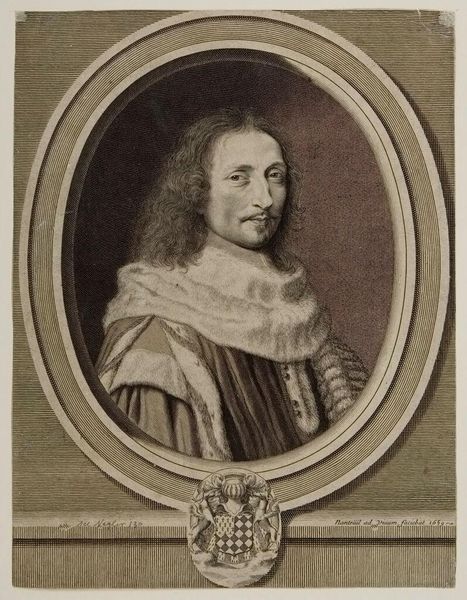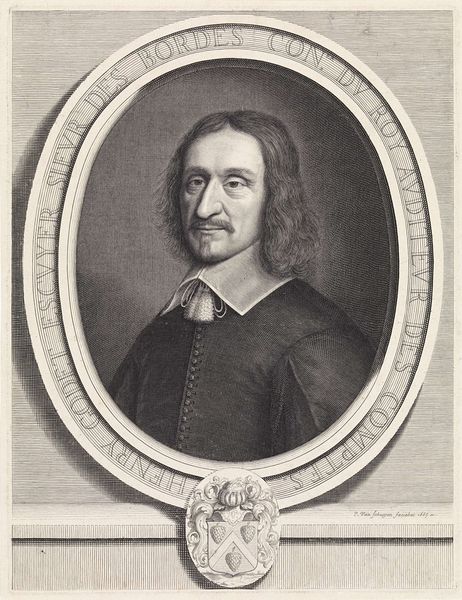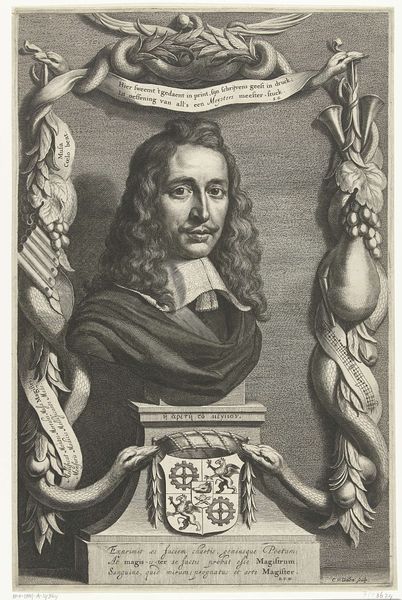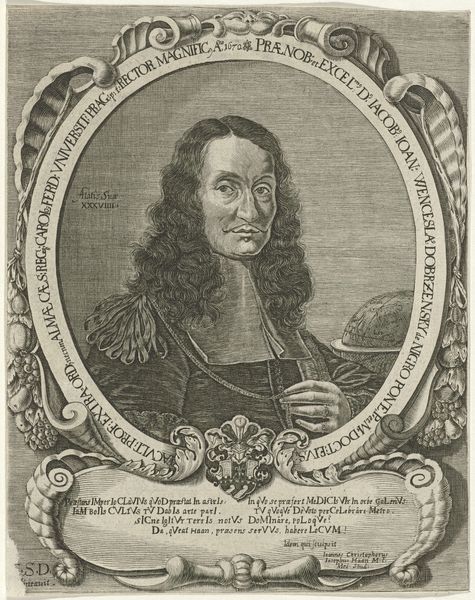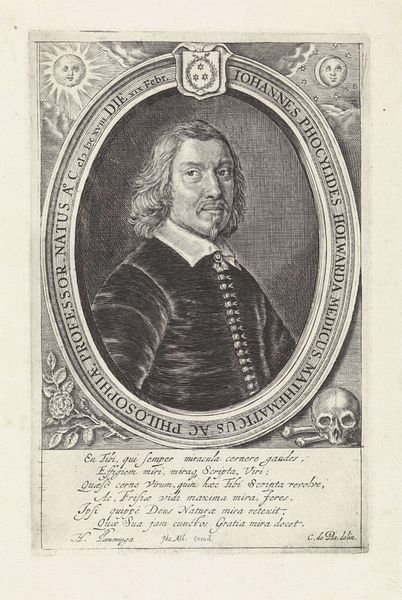
engraving
#
portrait
#
baroque
#
dutch-golden-age
#
old engraving style
#
portrait drawing
#
engraving
#
realism
Dimensions: height 136 mm, width 89 mm
Copyright: Rijks Museum: Open Domain
This is Jonas Suyderhoef's portrait of Watzo Frans van Cammingha, made in the 17th century. Framed within an oval, the portrait is encircled by an inscription noting Cammingha's status. The oval itself is a symbol of enclosure and containment, a tradition harking back to ancient Roman portraiture, where busts of ancestors were similarly framed. Consider the symbolic power of the laurel wreath often intertwined within such frames. It signifies victory and honor, adorning emperors and heroes alike. Here, the inscription takes its place, but the effect is similar: to elevate the sitter. Think of the reappearance of such framing devices throughout history, from Renaissance medals to modern-day commemorative plaques. What is it about the human psyche that seeks to immortalize its heroes within these symbolic enclosures? Perhaps it speaks to our deep-seated need for remembrance. As we contemplate the portrait, consider the cyclical nature of these visual motifs, forever resurfacing, evolving, and reminding us of the enduring power of symbols.
Comments
No comments
Be the first to comment and join the conversation on the ultimate creative platform.
